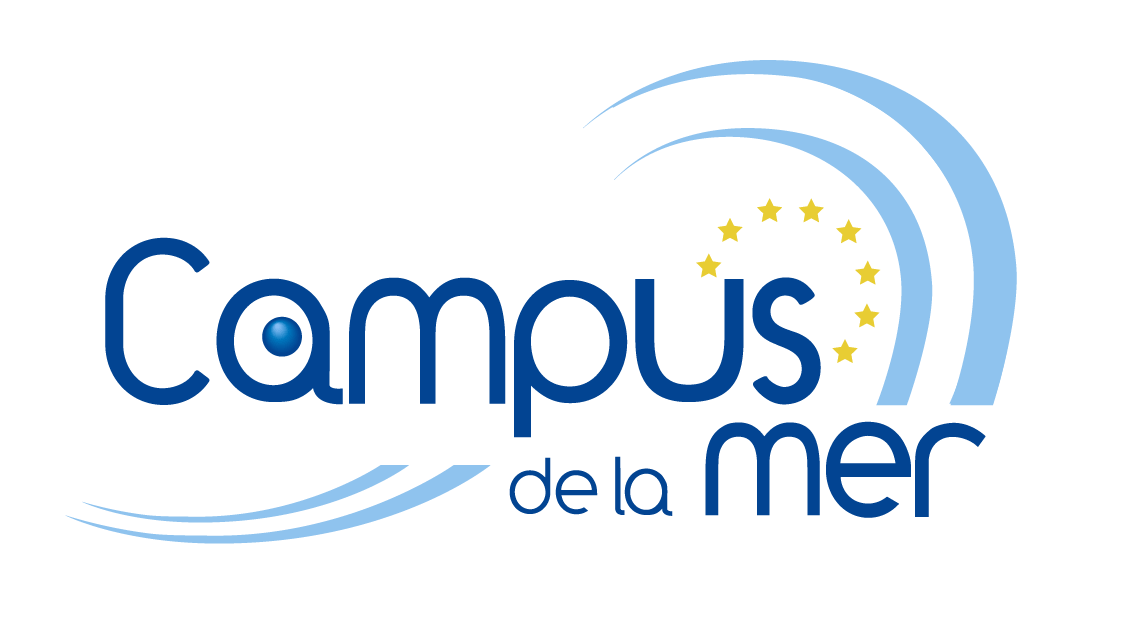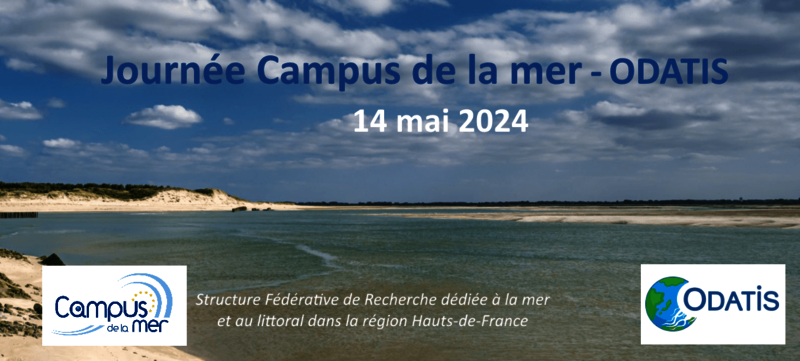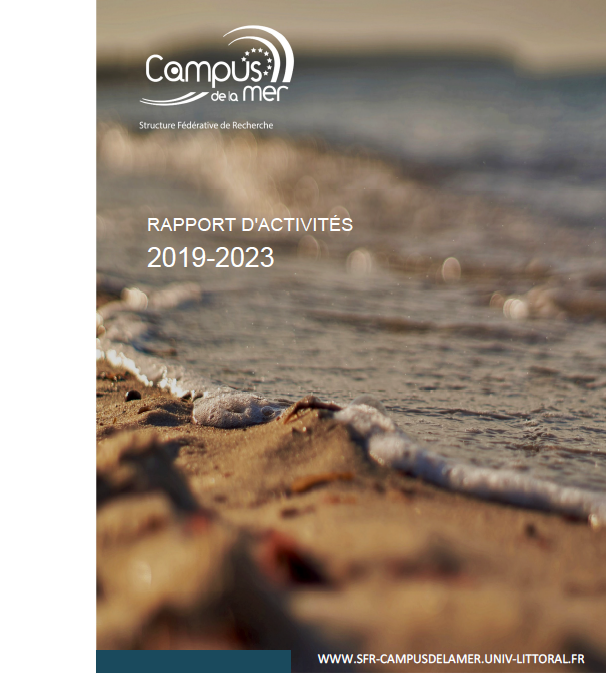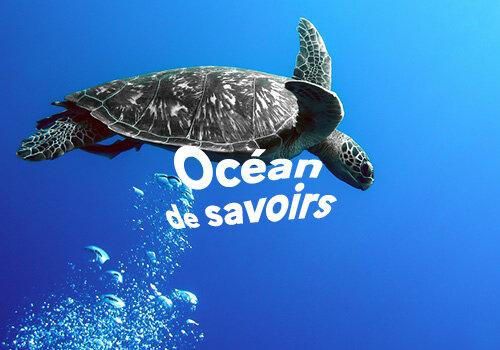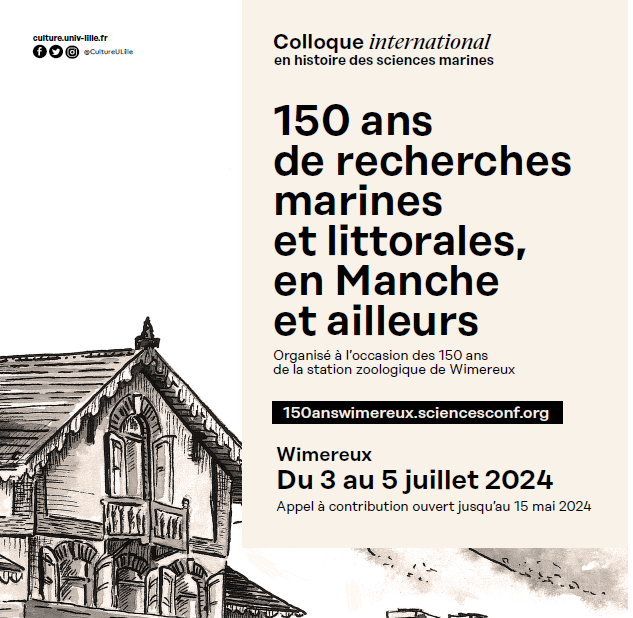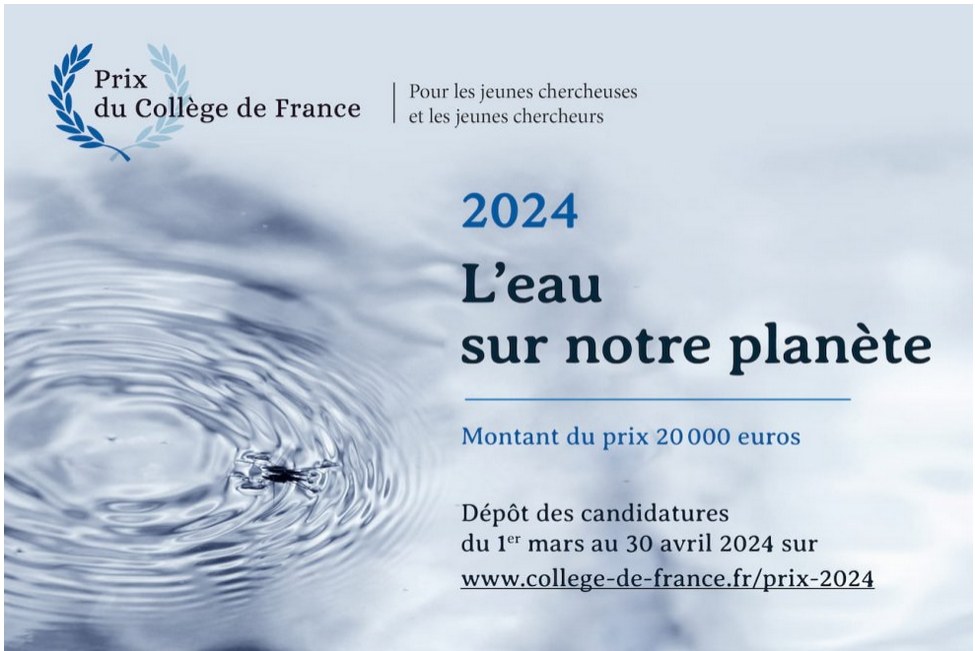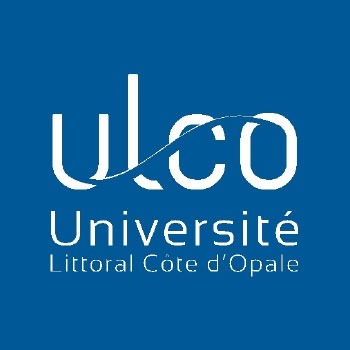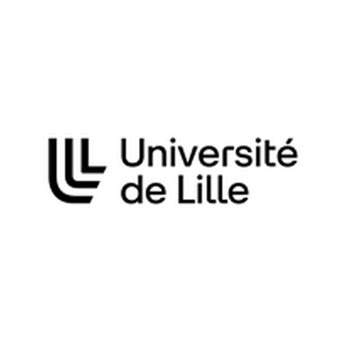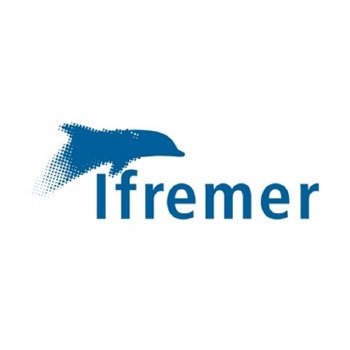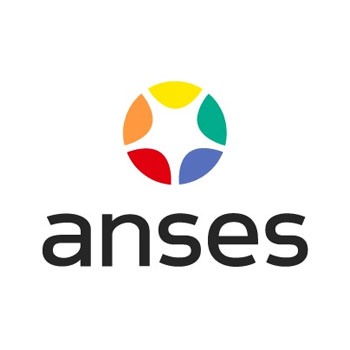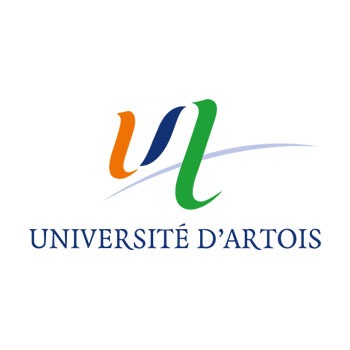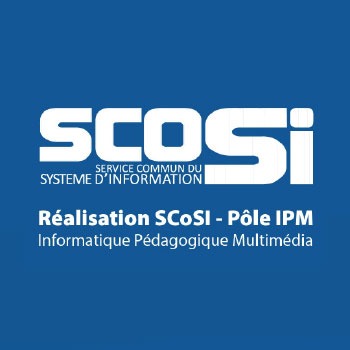Publications dans des revues à comité de lecture
Biaggini Kelly, Borrel Valérie, Szunerits Sabine, Boukherroub Rabah, N’Diaye Awa, Zébré Arthur, Bonnin-Jusserand Maryse, Duflos Guillaume, Feuilloley Marc, Drider Djamel, Déchelotte Pierre, Connil Nathalie, 2017. Substance P enhances lactic acid and tyramine production in Enterococcus faecalis V583 and promotes its cytotoxic effect on intestinal Caco-2/TC7 cells. Gut Pathogens, 9 (1). https://doi.org/10.1186/s13099-017-0171-3 [ICV, LSA]
Bojolly Daline, Doyen Périne, Le Fur Bruno, Christaki Urania, Verrez-Bagnis Véronique, Grard Thierry, 2017. Development of a qPCR method for the identification and quantification of two closely related tuna species, bigeye tuna (Thunnus obesus) and Yellowfin Tuna (Thunnus albacares), in canned tuna. Journal of Agricultural and Food Chemistry, 65 (4) : 913–920. https://doi.org/10.1021/acs.jafc.6b04713 [LOG, ICV]
Cachera Marie, Ernande Bruno, Villanueva Maria Ching, Lefebvre Sébastien, 2017. Individual diet variation in a marine fish assemblage: Optimal Foraging Theory, Niche Variation Hypothesis and functional identity. Journal of Sea Research, 120 : 60-71. https://doi.org/10.1016/j.seares.2016.08.004 [LRHBL, LOG]
Denis Jérémy, Mahe Kélig, Tavernier Eric, Monchy Sébastien, Vincent Dorothée, Vallet Carole, Marchal Paul, Antajan Elvire, Caboche Josselin, Lefebvre Valérie, Cordier Rémy, Loots Christophe, 2017. Ontogenetic changes in the larval condition of Downs herring: use of a multi-index approach at an individual scale. Marine Biology, 164. http://doi.org/10.1007/s00227-017-3180-3 [LRHBL, LOG]
Diop Mamadou, Net Sopheak, Howsam Michael, Lencel Philippe, Watier Denis, Grard Thierry, Duflos Guillaume, Diouf Amadou, Amara Rachid, 2017. Concentrations and Potential Human Health Risks of Trace Metals (Cd, Pb, Hg) and Selected Organic Pollutants (PAHs, PCBs) in Fish and Seafood from the Senegalese Coast. International Journal of Environmental Research, 11 (3): 349–358. https://doi.org/10.1007/s41742-017-0032-4 [ICV, LOG, LSA]
Giraldo Carolina, Boutoute Marc, Mayzaud Patrick, Tavernier Eric, Quang A.Vo, Koubbi Philippe, 2017. Lipid dynamics in early life stages of the icefish Chionodraco hamatus in the Dumont d’Urville Sea (East Antarctica). Polar Biology. 40 (2): 313–320. https://doi.org/10.1007/s00300-016-1956-4 [LRHBL, LOG]
Giraldo Carolina, Ernande Bruno, Cresson Pierre, Kopp Dorothée, Cachera Marie, Travers-Trolet Morgane, Lefebvre Sébastien, 2017. Depth gradient in the resource use of a fish community from a semi-enclosed sea. Limnology and Oceanography. 62 (5): 2213–2226. https://doi.org/10.1002/lno.10561 [LRHBL, LOG]
Houliez Emilie, Lefebvre Sébastien, Lizon Fabrice, Schmitt François G., 2017. Rapid light curves (RLC) or non-sequential steady-state light curves (N-SSLC): which fluorescence-based light response curve methodology robustly characterizes phytoplankton photosynthetic activity and acclimation status?. Marine Biology. 164 (8). https://doi.org/10.1007/s00227-017-3208-8 [LRHBL, LOG]
Ider Djamila, Ramdane Zouhir, Mahe Kélig, Dufour Jean-Louis, Bacha Mahmoud, Amara Rachid, 2017. Use of otolith-shape analysis for stock discrimination of Boops boops along the Algerian coast (southwestern Mediterranean Sea). African Journal Of Marine Science,39 (3): 251–258. https://doi.org/10.2989/1814232X.2017.1363817 [LRHBL, LOG]
Jabot Franck, Giraldo Carolina, Lefebvre Sébastien, Dubois Stanislas, 2017. Are food web structures well represented in isotopic spaces?. Functional Ecology. 31 (10): 1975–1984. https://doi.org/10.1111/1365-2435.12895 [LRHBL, LOG]
Pan Yen-Ju, Souissi Anissa, Sadovskaya Irina, Hansen Benni W, Hwang Jiang-Shiou, Souissi Sami, 2017. Effects of cold selective breeding on the body length, fatty acid content, and productivity of the tropical copepod Apocyclops royi (Cyclopoida, Copepoda). Journal of Plankton Research, 39 (6): 994–1003. https://doi.org/10.1093/plankt/fbx041 [ICV, LOG]
Poisson-Caillault Emilie, Lefebvre Alain, 2017. Towards Chl-a bloom understanding by EM-based unsupervised event detection. OCEANS17 MTS/IEEE A vision for sustaining our marine futures, 19-22 juin 2017, Aberdeen, Scotland, 5pp., IEEE doi: 10.1109/OCEANSE.2017.8084597 HAL Id: hal-01609271 [LERBL, LISIC]
Marine water quality monitoring and subsequent management require to know when a specific event like harmful algae bloom may occur and which environmental conditions and pressures lead to this event. So, event detection and its dynamic understanding are crucial to adapt strategy. An algorithm is proposed to identify curves mixture and their dynamics features – initiation, duration, peaks and ends of the event. The approach is fully unsupervised, it requires no tuning parameters and is based on Expectation Maximization process to estimate the most robust mixture according to fixed criteria. A complete framework is proposed to deal with a univariate time series with missing data. The approach is applied on Chlorophyll- a series collected weekly since 1989. Chlorophyll-a is a proxy of the phytoplankton biomass. The results are promising according to the phytoplankton composition knowledge, collected at lower frequency, and allowing to discuss about the annual variability of phytoplankton dynamics.
Cresson Pierre, Travers-Trolet Morgane, Rouquette Manuel, Timmerman Charles-André, Giraldo Carolina, Lefebvre Sébastien, Ernande Bruno, 2017. Underestimation of chemical contamination in marine fish muscle tissue can be reduced by considering variable wet: dry weight ratios. Marine Pollution Bulletin, 123 (1–2) : 279–285.https://doi.org/10.1016/j.marpolbul.2017.08.046 [LRHBL, LOG]
La contamination des poissons est un problème majeur, que ce soit pour les consommateurs humains qui consomment du poisson, ou pour les poissons, affecté par des niveaux de contamination dépassant certains seuils. De nombreuses mesures de niveaux de contamination chimique dans le poisson sont donc réalisées. Cependant, selon les finalités de l’analyse, les concentrations sont exprimées relativement à une masse de tissu sèche ou humide. Il est donc nécessaire de convertir les valeurs, mais peu de travaux mesurent effectivement ces facteurs de conversion. La plupart des travaux appliquent une valeur de 5, basée sur un taux théorique d’humidité du muscle de 80%.
L’objectif de ce travail était donc de mesurer spécifiquement les facteurs de conversion entre masse humide et masse sèche pour 15 espèces de poissons en Manche. La plupart des valeurs étaient inférieures à cette valeur théorique de 5, et des variations entre espèces et entre individus ont été détectées. Le taux de lipide musculaire semble jouer un rôle majeur dans la variabilité du facteur. L’utilisation de la valeur théorique semble donc peu appropriée pour les poissons gras, et peut amener à des erreurs de près de 30% quant à la concentration de contaminants. De manière plus large, la mesure des vrais facteurs de conversion est la meilleure approche lorsque la précision est souhaitée.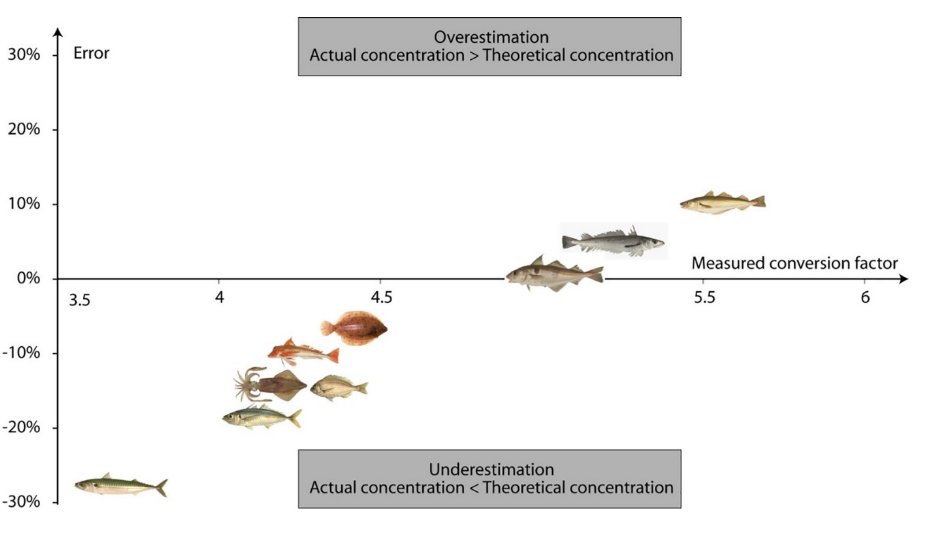
Duran-Medina Olmo, Schmitt François G., Calif Rudy, Germain Grégory, Gaurier Benoît, 2017. Turbulence analysis and multiscale correlations between synchronized flow velocity and marine turbine power production. Renewable Energy, 112: 314–327. https://doi.org/10.1016/j.renene.2017.05.024 [LCSM, LOG]
The correlation between the flow turbulence and the performances of a marine current turbine is studied. The incoming flow encountered in the flume tank is characterized in the framework of fully
developed turbulent cascades in the inertial range. The Reynolds number, the Kolmogorov dissipation scale and the integral scale, are estimated from flow measurements. The intermittency of the turbulence
is characterized in the lognormal multifractal framework, and the influence of the turbulent flow on the turbine power is assessed.
The rotor speed control unit characteristics used for the turbine regulation induces non-negligible effects on the turbine behavior under fluctuations loads. Even if the power spectrum does not reveal
any scale invariance, a multiscale analysis allows us to show the correlations between the turbulence time series and the power produced.
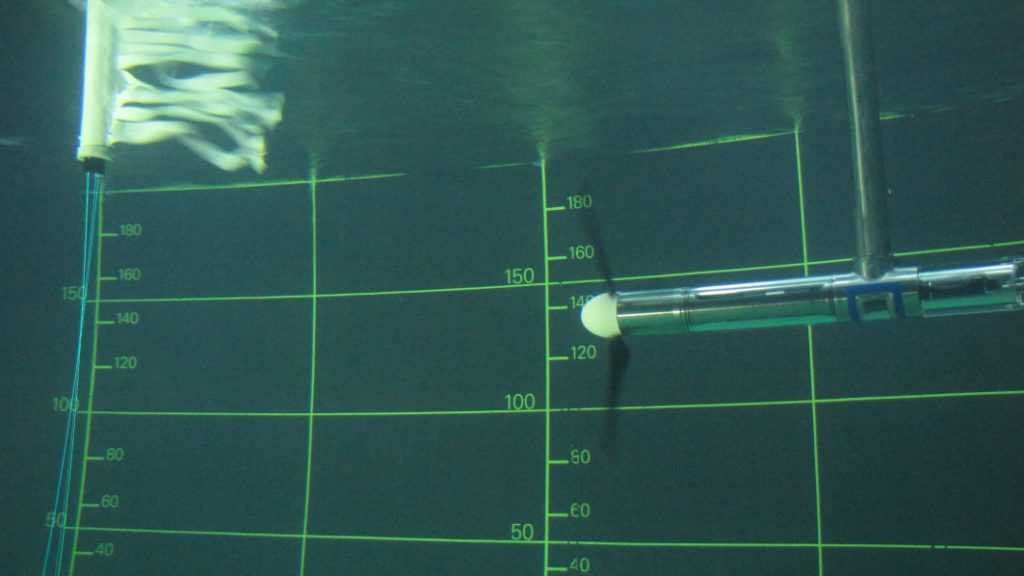
Gnouma Asma, Sadovskaya Irina, Souissi Anissa, Sebai Khaled, Medhioub Amel, Grard Thierry, Souissi Sami, 2017. Changes in fatty acids profile, monosaccharide profile and protein content during batch growth of Isochrysis galbana (T.iso). Aquaculture Research, 48 (9): 4982–4990. https://doi.org/10.1111/are.13316 [ICV, LOG]
Isochrysis galbana est une microalgue brune marine classiquement utilisée dans les écloseries en aquaculture pour l’alimentation de nombreuses espèces de rotifères, crustacés et copépodes.
C’est une souche riche en acides gras polyinsaturés à longue chaine (PolyUnsaturated Fatty Acids, PUFA), et notamment un oméga-3 DHA, (DocosaHexaenoic Acid).
Le but de notre étude était d’évaluer les qualités nutritives de cette microalgue durant la croissance. Nous avons étudié la composition biochimique de la souche Isochrysis galbana affinis Tahiti (T. iso) en condition de croissance contrôlée pendant 21 jours, durant de différentes phases de croissance : phase exponentielle (Ex, Jour 7), début de la Phase stationnaire, (Es, Jour 11), fin de la phase stationnaire (Ls, jour 16), et phase de déclin (D, jour 21). Nous avons dosé la teneur en acide gras, protéines et glucides dans la biomasse algale. Nous avons constaté un contenu optimal en PUFA au début de la phase exponentielle. La quantité de glucose a augmenté quatre fois vers la phase de déclin.
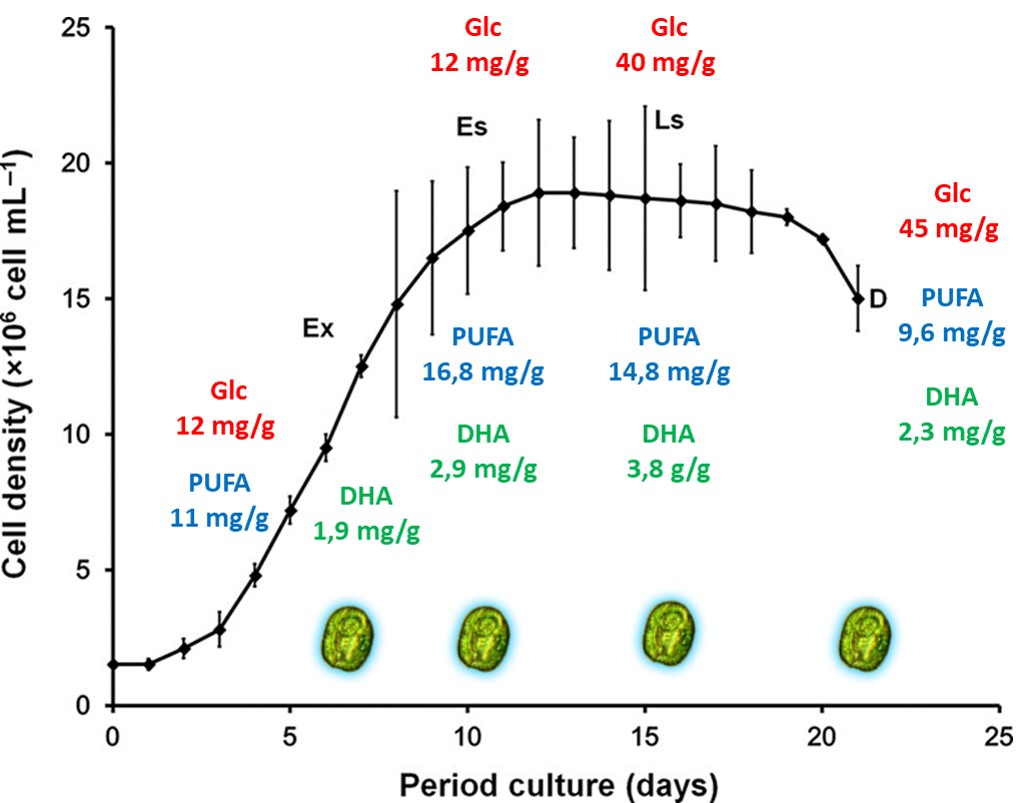
Phan Thi-Thu-Hong, Poisson-Caillault Émilie, Lefebvre Alain, Bigand André, 2017. Dynamic Time Warping-based imputation for univariate time series data. Pattern Recognition Letters. https://doi.org/10.1016/j.patrec.2017.08.019. HAL Id: hal-01609256 [LER, LISIC]
Time series with missing values occur in almost any domain of applied sciences. Ignoring missing values can lead to a loss of efficiency and unreliable results, especially for large missing sub-sequence(s). This paper proposes an approach to fill in large gap(s) within time series data under the assumption of effective information. To obtain the imputation of missing values, we find the most similar sub-sequence to the sub-sequence before (resp. after) the missing values, then complete the gap by the next (resp. previous) sub-sequence of the most similar one. Dynamic Time Warping algorithm is applied to compare sub-sequences, and combined with the shape-feature extraction algorithm for reducing insignificant solutions. Eight well-known and real-world data sets are used for evaluating the performance of the proposed approach in comparison with five other methods on different indicators. The obtained results proved that the performance of our approach is the most robust one in case of time series data having high auto-correlation and cross-correlation, strong seasonality, large gap(s), and complex distribution.
Zidour Mahammed, Chevalier Mickaël, Belguesmia Yanath, Cudennec Benoit, Grard Thierry, Drider Djamel, Souissi Sami, Flahaut Christophe, 2017. Isolation and characterization of bacteria colonizing Acartia tonsa copepod eggs and displaying antagonist effects against Vibrio anguillarum, Vibrio alginolyticus and Other pathogenic strains. Frontiers in Microbiology. 8: 1919. [ICV-LOG]
Présentations orales internationales
Phan Thi-Thu-Hong, Poisson-Caillault Emilie, Lefebvre Alain, Bigand André, 2017. A novel approach for uncorrelated multivariate time series imputation. IEEE International Worshop on Machine Learning for signal processing, 25-28 septembre 2017, Tokyo, Japon. Doi: 10.1109/MLSP.2017.8168165 HAL Id: hal-01609267 [LERBL, LISIC]
Phan Thi-Thu-Hong, Poisson-Caillault Emilie, Lefebvre Alain, Bigand André, 2017. Which DTW method applied to marine univariate time series imputation. OCEANS17 MTS/IEEE A vision for sustaining our marine futures, 19-22 juin 2017, Aberdeen, Scotland, 7pp., IEEE http://dx.doi.org/10.1109/OCEANSE.2017.8084598 HAL Id: hal-01609268 [LERBL, LISIC]
Rapports d’expertise
Seppälä J, Lefebvre A, Lizon F, Artigas F, Rytövuori S, Ylöstalo P and Möller K. (2017). Bio-optical instrumentation for phytoplankton monitoring. Rapport d’expertise JericoNext (UE, H2020), 19p. [LERBL, LISIC]
Karlson B., Artigas L.-F., Louchart A., Seppälä J., Claquin P., Colas F., Créach V., de Blok R., Deneudt K., Grégori G., Kromkamp J., Lefebvre A., Lizon F., Möller K., Rijkeboer M., Stemmann L., Thyssen M., Tyberghein L., Wacquet G. (2017). Contribution to the JRAP#1: Phytoplankton biodiversity and HAB (Biodiversity of phytoplankton, harmful algal blooms and eutrophication), Progress Report #2. Work package 4, Deliverable 4.3 of JERICO-Next project, 66 pages. [LERBL, LISIC]
